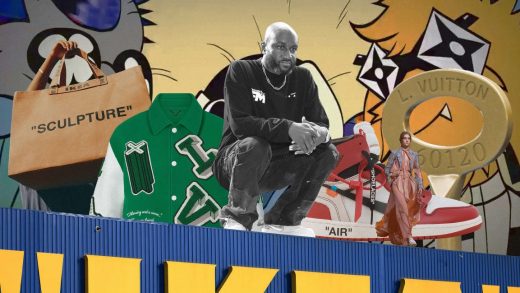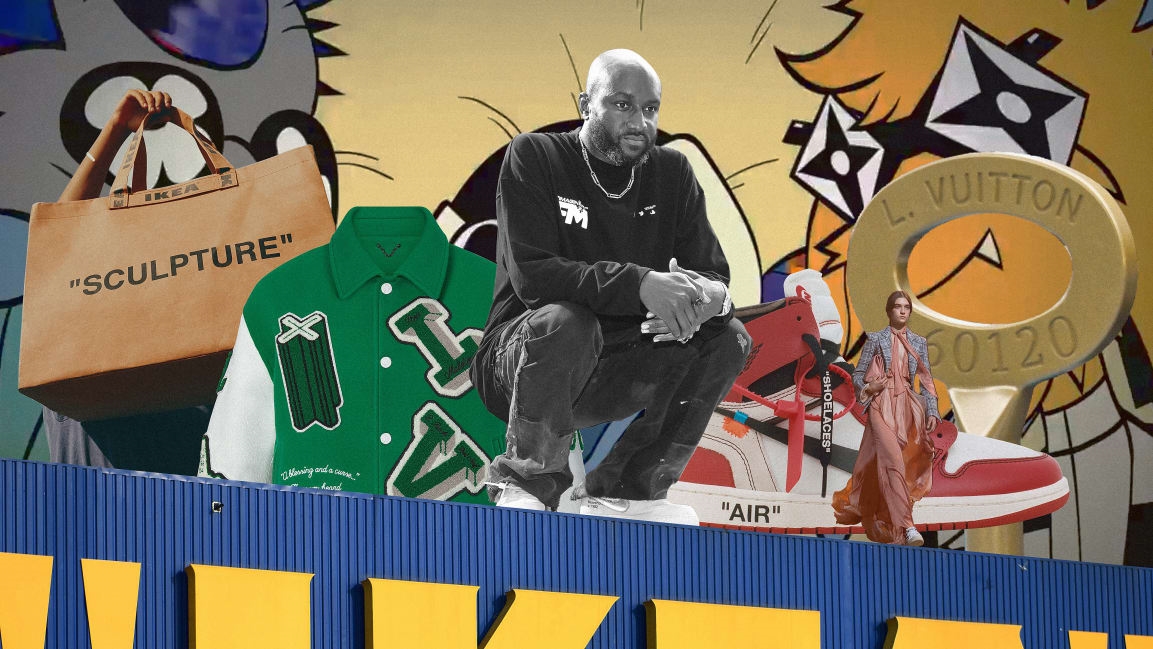Virgil Abloh’s best work: 6 projects that show his prolific mind and artistic soul
Virgil Abloh, a visionary designer whose work transcended disciplinary boundaries, died in Chicago on Sunday at the age of 41. His death came as a shock to many. For two years, he had been battling a rare form of cancer, cardiac angiosarcoma, and chose to keep his illness private, even as he continued to create prolifically.
Abloh was the most powerful Black creative in the world of luxury fashion. He had been the artistic director for menswear at Louis Vuitton since 2018 and last July took on a new role at the brand’s parent company, LVMH, where he helped shape the conglomerate’s fashion, spirits, and hotel brands. At the same time, he continued to serve as the creative director of his own fashion label, Off-White, while collaborating with brands like Ikea and Evian.
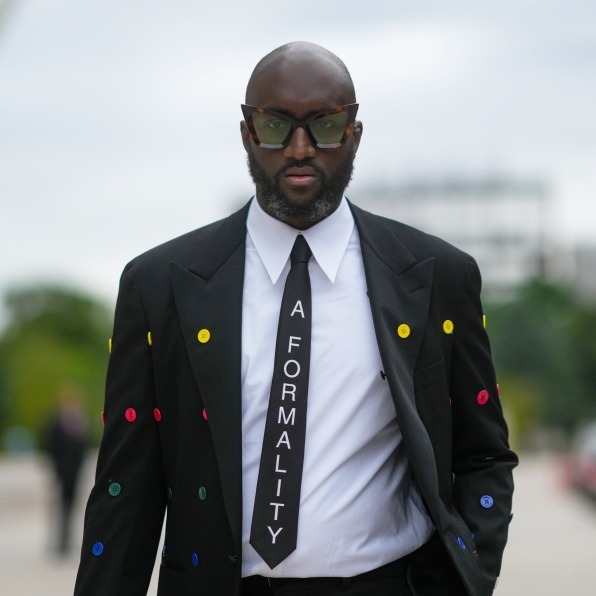
[Photo: Edward Berthelot/Getty Images]
But Abloh never felt confined by his role as a fashion designer. Over the course of his two-decades long career, he worked in everything from music to art to industrial design. He was born in Rockford, Illinois, to parents who had immigrated from Ghana, and grew up steeped in Chicago’s hip-hop scene. While studying civil engineering at the University of Wisconsin-Madison and then architecture at the Illinois Institute of Technology, Abloh spent his spare time DJing and blogging about culture.
At 22, he met Kanye West, and the two began a collaborative partnership that would last until Abloh’s death. Abloh designed West’s album covers and later interned alongside West at Fendi in an effort to learn about the workings of luxury fashion. These diverse creative influences inspired Abloh to seek out ways to express himself across fields. In “Figures of Speech,” a mid-career retrospective exhibit he helped curate in 2019 at the Institute of Contemporary Art in Boston, a wall was emblazoned with a quote of his that summarized his approach to design: “There’s no borders between mediums, only just human-perceived borders.”
Ultimately, Abloh believed that design was a language that allowed him to communicate complex ideas to the world. He often returned to the same themes. He used quotation marks to re-contextualize everyday concepts: He designed a paper Ikea bag adorned with the word “Sculpture,” for instance. He made it clear that good design didn’t have to be expensive, which is why he chose to design Evian water bottles and Nike sneakers. And throughout his career, he chose to center the experiences of Black people. A series of Louis Vuitton varsity jackets are splashed with quotes from Martin Luther King Jr. and a patch representing the continent of Africa.
I last spoke with Abloh in the summer of 2020, in the midst of the Black Lives Matter protests. At the time, he’d faced criticism for expressing dismay that protesters were looting businesses. He shared his side of the story and apologized for not more clearly articulating his support for the movement. Ultimately, he said he wanted his art–rather than his words–to speak. “I’m a passionate designer and artist,” Abloh told me. “I’m not versed in public speaking, especially on topics that are quickly evolving. I’m not made for a podium, but I’ll design a podium that ushers in systemic change.”
Here are some of Abloh’s most innovative designs over his 20-year career.
DJ Flyers With UN Logo
Starting in 2016, Abloh created flyers to invite people to his DJ shows featuring the United Nations logo. In 2018, the UN sent him a cease-and-desist letter, demanding that he remove all 135 instances of the logo. Abloh proudly framed and featured the letter in his 2019 museum show. The experience encapsulated Abloh’s approach to creativity. He believed that all art—including something as banal as the UN logo—was open to being reinterpreted by other artists. By putting it in a new context, it could have new meaning.
He explained this at a 2018 lecture at the Harvard Graduate School of Design. “I’m sure that you’re trying to challenge yourself to invent something new, trying to be avant-garde,” he said. “Basically, that’s impossible. … As designers and artists we exist as a result of the many iterations before us, and we’re collectively trekking in the same direction.”
Soccer Uniforms for an Immigrant Soccer Team
Abloh’s roots as a Ghanaian immigrant and his ties to the Black community regularly surfaced in his work, from his fashion shows for Louis Vuitton to his support of young Black designers. In 2017, he turned his attention to a Paris-based soccer team called the Melting Passes, which was largely made up of immigrants from West Africa who didn’t have a strong support network in France. Abloh designed jerseys for the team, emblazoned with both the Off-White and Nike logos, and invited the players to his fashion show.
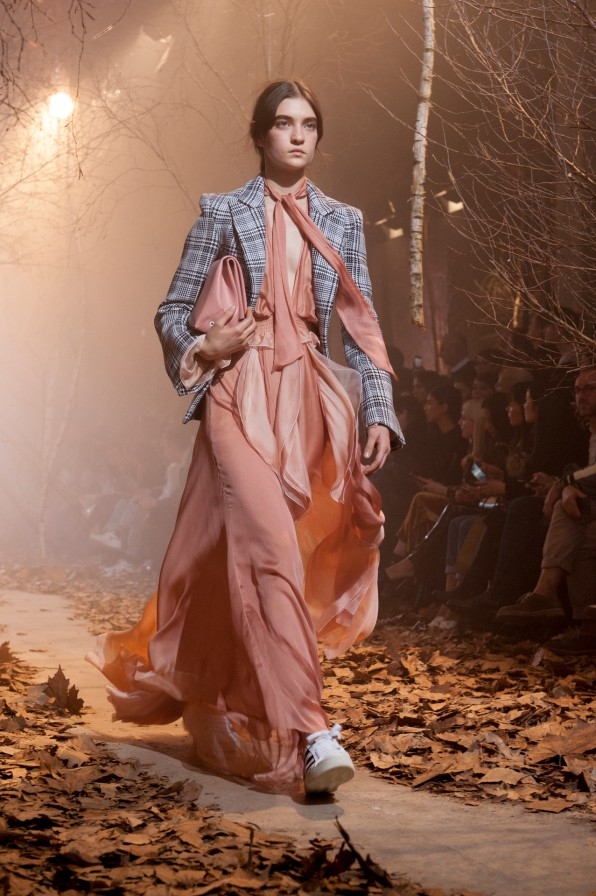
“Nothing New” Collection
As Abloh ascended the ranks of luxury fashion, he was not always well-received. In 2017, the designer Raf Simons took a direct dig at him in an interview with GQ, saying, “[Virgil Abloh]’s a sweet guy. I like him a lot actually. But I’m inspired by people who bring something that I think has not been seen, that is original. It’s not always about being new-new because who is new-new?”
In his classic way, Abloh chose to respond to Simons through his work and titled his next Off-White collection “Nothing New,” using an image of Mona Lisa covered in graffiti as the invitation to his show. With an image, Abloh conveyed that Simon fundamentally misunderstood his entire philosophy of design.
Nike Store in Chicago
In 2019, a new Nike store was unveiled in Chicago that Abloh helped design. The store had personal significance to him, since he spent time in downtown Chicago as a child, visiting the shops on Michigan Avenue that featured the biggest brands in the world, including the Niketown store. He told my colleague Mark Wilson that this was his “gateway to the world.”
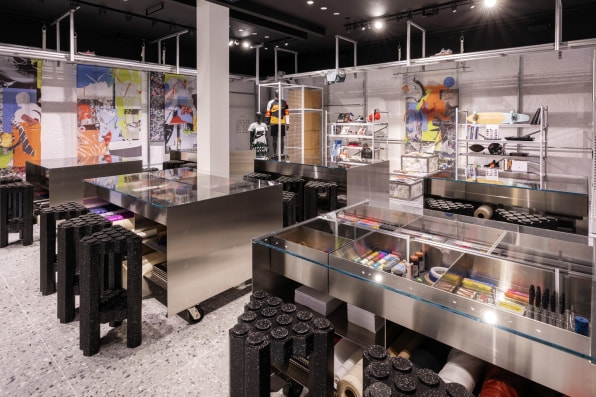
Niketown had long since closed, but on that same block, Abloh helped create an immersive, experiential new store called Nikelab Chicago. Every aspect of the design was meant to foreground Nike’s sustainability efforts. The seats, flooring, and walls, for instance, are all made up of ground-up old shoes Nike collected from customers. “The concept is valuable to me and the brand,” he said. “But it’s not about the exchange of dollars.”
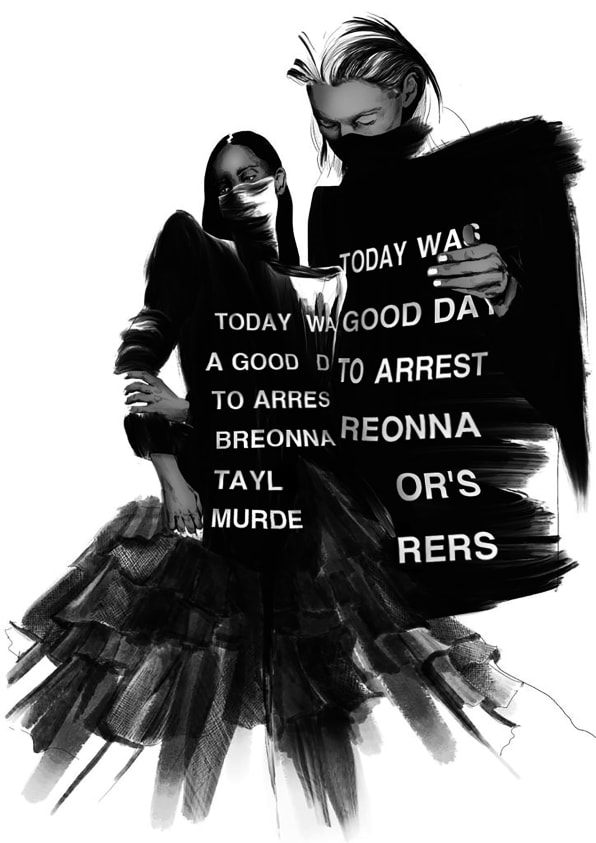
Post-Pandemic Fashion
Last year, I reached out to Abloh to ask him for a sketch about how he imagined fashion after the pandemic. Despite his hectic schedule and his illness, he was kind enough to create one. The image he sent had nothing at all to do with the pandemic. Instead, it featured two figures wearing shirts that said, “Today was a good day to arrest Breonna Taylor’s murderers.” His hope was that the Black Lives Matter protests would continue to shape the fashion industry, inspiring people to use clothing to communicate their hopes for the world.
Light in the darkness
Last summer, with the pandemic raging, fashion brands had to rethink how to unveil their latest collections. As artistic director of menswear at Louis Vuitton, Abloh chose to create a cartoon video. It featured characters bopping around to irresistible funk music who hide as stowaways in a Louis Vuitton truck that zips around France, starting in the town of Asnières, where the brand was founded, all the way to Paris.
Abloh directed this video at a dark time. People around the world felt trapped and beleaguered by the pandemic lockdowns. It’s now clear that Abloh himself was fighting a terminal illness. And yet the video is so jubilant, quirky, and uplifting. It reveals the mind of an artist who chose to keep creating and expressing himself in spite of everything life threw at him.
Fast Company , Read Full Story
(77)

